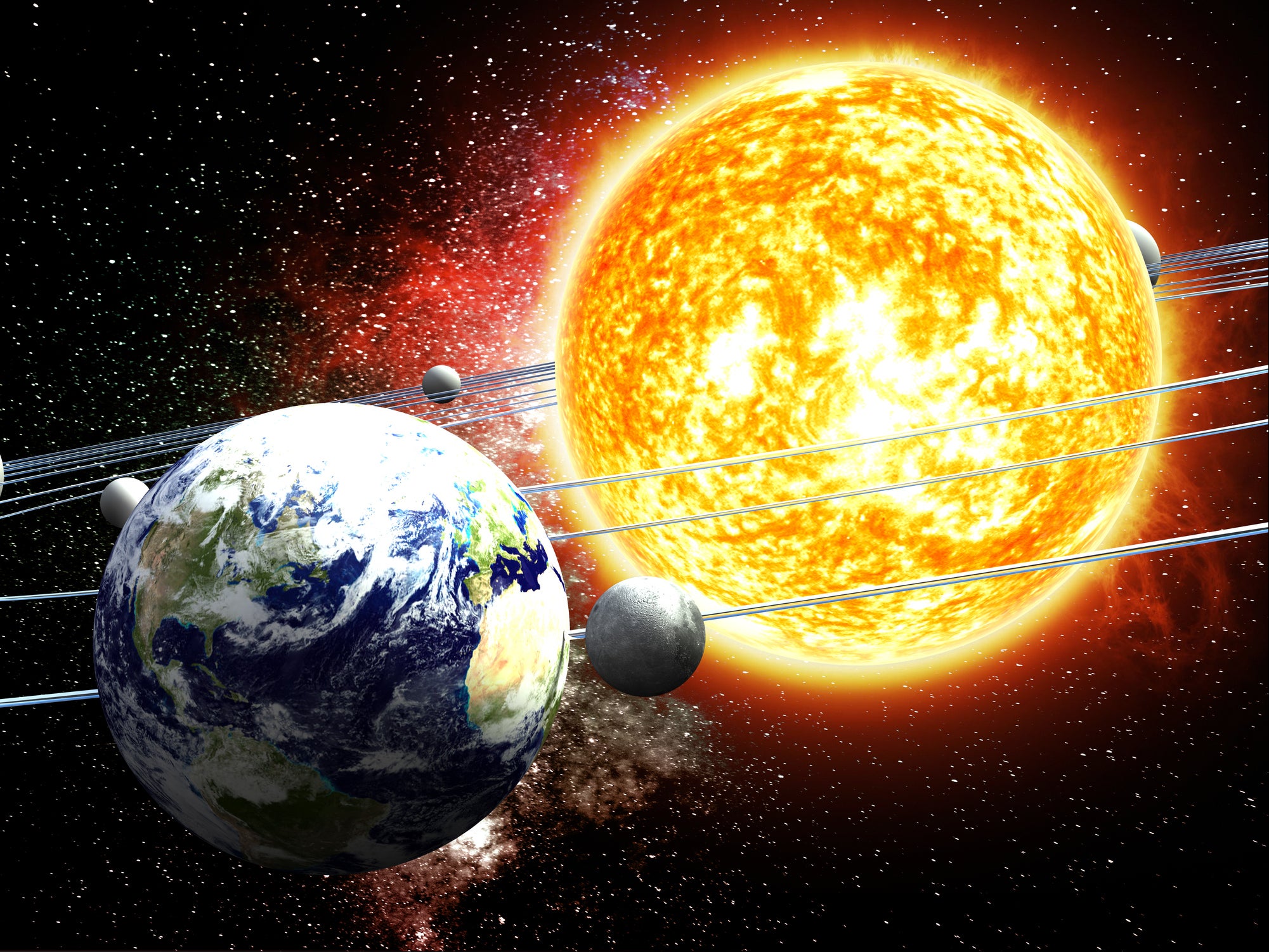‘Tug of war’ between Earth, Moon and Sun could be driving tectonic plate movements
Researchers say heat within our planet is not sufficient to move tectonic plates

Your support helps us to tell the story
From reproductive rights to climate change to Big Tech, The Independent is on the ground when the story is developing. Whether it's investigating the financials of Elon Musk's pro-Trump PAC or producing our latest documentary, 'The A Word', which shines a light on the American women fighting for reproductive rights, we know how important it is to parse out the facts from the messaging.
At such a critical moment in US history, we need reporters on the ground. Your donation allows us to keep sending journalists to speak to both sides of the story.
The Independent is trusted by Americans across the entire political spectrum. And unlike many other quality news outlets, we choose not to lock Americans out of our reporting and analysis with paywalls. We believe quality journalism should be available to everyone, paid for by those who can afford it.
Your support makes all the difference.The tectonic plates making up the rigid shell of the Earth are always moving, impacting life on our planet in various ways.
These huge plates may move slowly, but they create many of the Earth’s unique topographical features such as mountains, chasms, individual islands, archipelagoes and ocean trenches – all on a continental scale.
Earthquakes, volcanoes and tsunamis, however, are all also the result of the constant flux of the lithosphere – the rocky crust and the upper part of the mantle.
An average tectonic plate may move around 40mm a year – roughly the same speed as a fingernail grows – while the fastest, the Nazca Plate off western South America, moves around 160mm a year, around the same speed hair grows.
The overriding consensus over what drives the movement of the plates has long settled on convection currents within the Earth’s mantle, which theorises that movement of massive amounts of heat energy drag the plates around from beneath.
But a new study by scientists at Washington University in St Louis propose there is not enough energy inside the Earth required to move tectonic plates, and instead the imbalanced forces of gravity between the Earth, the Moon and the Sun together drive the circulation of the whole mantle.
The researchers said the Earth’s plates might be shifting because the Sun exerts such a strong gravitational pull on the Moon that it caused the Moon’s orbit around Earth to become elongated.
Over time, the position of the "barycentre", or the centre of mass between the orbiting bodies of the Earth and the Moon, has moved closer to the Earth’s surface. It now oscillates 600km per month relative to the geocenter (the centre of the Earth), scientists say. This sets up internal stresses as the Earth continues to spin.
“Because the oscillating barycentre lies around 4,600km from the geocentre, Earth’s tangential orbital acceleration and solar pull are imbalanced except at the barycentre,” said Professor Anne Hofmeister, who led the study.
“The planet’s warm, thick and strong interior layers can withstand these stresses, but its thin, cold, brittle lithosphere responds by fracturing.”
Furthermore, the authors contend the daily spin of the Earth, which flattens the planet from a perfect spherical shape, contributes to this brittle failure of the lithosphere.
These two independent stresses create the mosaic of plates observed in the outer shell, the authors suggest.
The variety of plate motions comes from the changes in size and direction of the imbalanced gravitational forces with time.
It is difficult for the researchers to test this theory. They have suggested closer examination of Pluto’s crust could provide further information about how tectonic plates respond to gravitational forces.
“One test would be a detailed examination of the tectonics of Pluto, which is too small and cold to convect but has a giant moon and a surprisingly young surface,” said Professor Hofmeister.
The study also includes a comparison of rocky planets showing that the presence and longevity of volcanism and tectonism depend on the particular combination of moon size, moon orbital orientation, proximity to the Sun and rates of body spin and cooling.
Earth is the only rocky planet with all the factors needed for plate tectonics, Professor Hofmeister said.
“Our uniquely large moon and particular distance from the sun are essential,” she added.
The research is published by the Geological Society of America.
Join our commenting forum
Join thought-provoking conversations, follow other Independent readers and see their replies
Comments